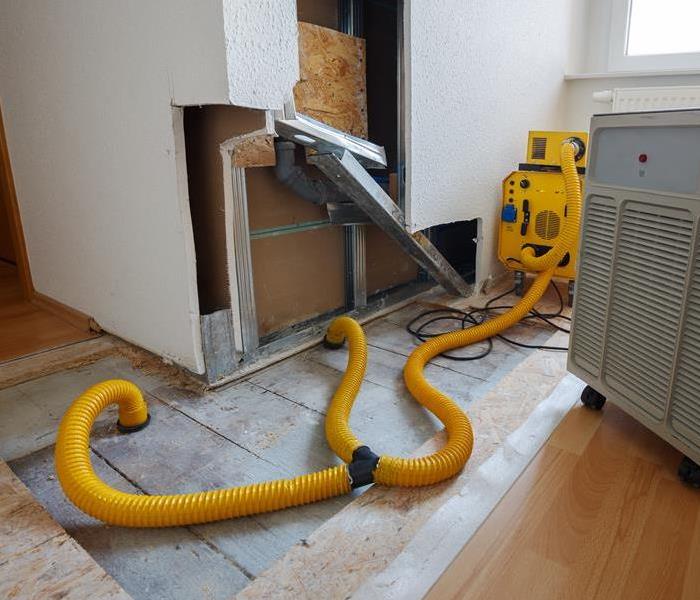Building with Care: How to Prevent Water Damage During Construction
7/24/2023 (Permalink)
Water damage during construction can be a costly and time-consuming problem that can significantly delay a project and incur additional expenses. Taking proactive measures to prevent water damage is crucial for the successful completion of any construction project. In this blog post, we will discuss important strategies and best practices to help you prevent water damage during construction, ensuring a smooth and efficient construction process.
Create a Detailed Construction Plan
Before starting any construction project, develop a comprehensive plan that includes a thorough assessment of the site and potential water-related risks. Consider factors such as the topography, drainage patterns, and existing water sources. By understanding these factors, you can implement preventive measures tailored to the specific needs of the site.
Install Proper Drainage Systems
Effective drainage systems are essential to prevent water accumulation and potential damage. Ensure that the site is properly graded to direct water away from the construction area. Install temporary or permanent drainage systems, such as trenches, swales, or French drains, to redirect water flow and prevent pooling.
During construction, it is crucial to protect building materials from exposure to moisture. Store materials in covered areas or use waterproof coverings to shield them from rain, snow, or other sources of water. Proper storage and protection will help maintain the integrity of materials and prevent water damage.
Implement Temporary Waterproofing Measures
Utilize temporary waterproofing measures to safeguard vulnerable areas of the construction site. Apply waterproof coatings or membranes to exposed surfaces, such as foundations, walls, or roofs. Install temporary barriers, such as tarps or plastic sheeting, to protect areas where water infiltration is likely.
Regularly inspect and maintain the site's drainage systems to ensure they are functioning optimally. Clear any debris or obstructions that may impede water flow. Monitor and address any signs of poor drainage, such as standing water or erosion, promptly.
Protect Openings and Penetrations
Properly seal and protect all openings and penetrations in the building envelope to prevent water intrusion. Install temporary or permanent waterproof barriers around windows, doors, vents, and other openings. Use appropriate sealants and flashing materials to ensure a watertight seal.
Promote safe construction practices that minimize the risk of water damage. This includes covering partially completed structures overnight or during inclement weather to protect them from water exposure. Additionally, establish protocols for immediate cleanup and drying of any water spills or leaks that occur during construction.
Stay informed about weather forecasts and anticipate potential weather events that could lead to water damage. Implement precautionary measures when adverse weather conditions are expected, such as heavy rain or storms. Adjust construction schedules accordingly to avoid working during periods of high risk.
Regularly Inspect and Test Systems
Throughout the construction process, conduct regular inspections and testing of water-related systems, such as plumbing, roofing, and waterproofing installations. Identify and address any issues promptly to prevent potential water damage.
Consult and collaborate with experienced architects, engineers, and contractors who specialize in water management and construction best practices. Their expertise will ensure that proper measures are taken to prevent water damage and address any potential risks effectively.
Preventing water damage during construction requires careful planning, proactive measures, and diligent monitoring. By implementing strategies such as creating a detailed construction plan, installing proper drainage systems, protecting building materials, implementing temporary waterproofing measures, and maintaining proper site drainage, you can significantly reduce the risk of water damage and ensure a successful construction project. Taking these preventive steps will save time, money, and resources, allowing for a smooth construction process and a structurally sound building in the end.






 24/7 Emergency Service
24/7 Emergency Service
